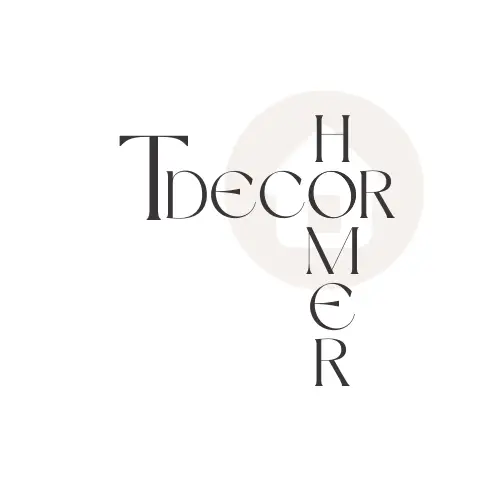What Is The Difference Between Decor And Decoration?
Welcome to the world of aesthetics!
When it comes to interior design and creating visually appealing spaces, you might have come across the terms “decor” and “decoration.” But what sets them apart?
In this friendly guide, I’ll unravel the difference between decor and decoration, helping you understand the nuances and unleash your creativity in styling your living spaces. Get ready to delve into the captivating realm of design and discover the key distinctions between these two terms.
What Is Decor?
Decor, short for “decoration,” refers to the overall style, theme, and atmosphere of a space. It encompasses the intentional arrangement of furniture, color schemes, textures, lighting, and architectural elements to create a cohesive and aesthetically pleasing environment.
Decor sets the tone for a room and helps to establish the desired ambiance and mood. It involves the strategic selection and placement of various elements to create a visually appealing and functional space that reflects the personal style and preferences of the occupants.
You May Like
- 15 Black & White Room Décor Ideas
- 8 Tips For Elegant/Luxury Home Decor Ideas
- Gold & Black Home Decor Tips
- 10 Mid-Century Modern Decor Ideas
- Green Country Decor – The Definitive Guide
What Is Decoration?
Decoration refers to the individual accents, accessories, and embellishments used to enhance and personalize a space. It involves the addition of decorative items such as artwork, wall hangings, curtains, rugs, throw pillows, vases, and other decorative objects.
Decoration adds the finishing touches to a room, injecting character, color, and visual interest. These embellishments can be changed or updated easily, allowing for flexibility and creativity in transforming the look and feel of a space without making significant structural or design changes.
What Is The Difference Between Decor And Decoration?
Decor encompasses the overall style, arrangement, and ambiance of a space, while decorations refer to the individual accents and embellishments that enhance and personalize the decor. Let’s dive into some of the key aspect of decor and decoration to remove all your confusion.
Key Aspects Of Decor
- Furniture: The selection, placement, and arrangement of furniture pieces play a significant role in defining the overall decor of a space. Different furniture styles, materials, and colors contribute to the desired ambiance. For example, a minimalist decor may feature clean lines and minimal furniture, while a traditional decor may incorporate ornate and vintage-inspired pieces.
- Color schemes: The choice of colors used on walls, furniture, and accessories has a substantial impact on the overall decor. Colors can evoke specific moods and set the tone for a room. For instance, a neutral color palette may create a serene and calming atmosphere, while bold and vibrant colors can add energy and personality.
- Textures and materials: The textures and materials used in decor add depth and visual interest to a space. From soft and plush textiles to sleek and glossy surfaces, the combination of different textures and materials creates a tactile experience and enhances the overall aesthetic appeal.
- Lighting: Lighting plays a crucial role in decor, as it affects the mood and ambiance of a space. The strategic placement of light fixtures, the use of natural light, and the incorporation of various lighting techniques can highlight focal points, create specific atmospheres, and enhance the overall decor.
Key Aspects Of Decoration
- Artwork and wall hangings: Paintings, photographs, prints, and other wall art are common decorative elements used to add personality and aesthetic appeal to a space. They can serve as focal points, contribute to the color scheme, or evoke a particular theme or mood.
- Soft furnishings: Decorative textiles such as curtains, drapes, rugs, throw pillows, and blankets can instantly transform a space. They add warmth, texture, and color while allowing for easy updates and changes to match evolving decor styles.
- Accessories: Decorative objects such as vases, sculptures, figurines, candles, and other trinkets are popular decorative accents that can be displayed on shelves, tables, or mantels. These accessories add a personal touch and can reflect hobbies, interests, or sentimental value.
- Ornamental details: Decorative details such as moldings, trim, and architectural embellishments can enhance the overall decor of a space. These details add architectural interest and contribute to a specific design style, such as intricate crown molding in a classic decor or clean lines in a modern decor.
You May Like
- 9+ Ideas For Bedroom Decoration
- 9 Elegant White Party Decorations Ideas
- How To Decorate A Round Mirror For Christmas?
- How To Decorate Round Mirror In The Bathroom?
Final Words
Now that you have a clear understanding of the difference between decor and decoration, you’re equipped to transform your living spaces with confidence and flair. Remember, decor encompasses the overall style, theme, and atmosphere you create through furniture, color schemes, and architectural elements.
Decoration, on the other hand, refers to the individual accents, accessories, and embellishments that add charm and personality to your space. So, let your creativity shine as you curate your surroundings, striking the perfect balance between decor and decoration to reflect your unique taste and create a truly captivating and inviting environment.
Happy decorating!
